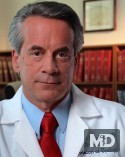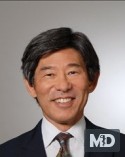THURSDAY, March 23, 2017 (HealthDay News) -- Aging mice became more youthful following a new cellular therapy about to be tested in humans, researchers say.
The treatment reversed age-related loss of fur, boosted the rodents' vitality and improved their kidney function, according to a new report.
The experimental therapy "restored health after the mice had already deteriorated," said senior study author Peter de Keizer.
Advertisement
"So, I don't think it merely delays aging, but might actually -- though more research is needed -- counteract it once it has already happened," said de Keizer. He is a researcher of aging at Erasmus University Medical Center in the Netherlands.
The research team is preparing to test the therapy in humans with a type of aggressive brain cancer, de Keizer said.
"We think we could hopefully make a difference in the treatment of this non-curable disease," he added.
Aging occurs when the body starts to accumulate broken-down cells that interfere with the body's ability to heal and renew itself, de Keizer said. These are called senescent cells.
According to Nathan LeBrasseur, an associate professor of physical medicine and physiology at the Mayo Clinic in Rochester, Minn., damaged senescent cells "no longer function properly and can actually wreak havoc on neighboring cells that are otherwise healthy."
In the new therapy, a peptide signals these damaged cells to destroy themselves. Peptides are short chains of amino acids that help regulate cellular activity.
Aging cells contain elevated levels of a protein called FOXO4 that interferes with the normal process by which damaged cells destroy themselves.
The senescent cells remain in the body and accumulate, essentially becoming "the rotten apple that spoils the cart," explained LeBrasseur, who wasn't involved in the research.
The peptide treatment targets FOXO4, causing the age-damaged cells to self-destruct.
Another expert on aging who was not involved in the study, Dr. Gisele Wolf-Klein, said, "They've been able to find the protein that's most likely the culprit behind the aging process." Wolf-Klein is director of geriatric education at Northwell Health in Great Neck, N.Y.
"That protein is not expressed in non-aging cells. If we can tackle that protein and leave alone the other cells that are doing just fine, then we indeed have a way of interfering or halting the aging process," she said.
It took more than four years of trial and error to develop the peptide treatment, before beginning the mouse experiments that produced these results, the researchers noted.
Fast-aging mice that had lost patches of fur began to recover their coats after 10 days of treatment with the peptide, according to the report.
After about three weeks, fitness benefits began to show. Older mice could run twice the distance of peers that did not receive the peptide. A month after treatment, elderly rodents also appeared to regain healthy kidney function.
The researchers said that the changes were so dramatic in fast-aging mice that they had to reduce doses of the peptide.
The mice continue to be studied to see if this treatment will extend their life span, de Keizer said.
The team also is branching into human safety trials, to show that the peptide is non-toxic in humans with no unforeseen side effects. However, results of animal studies often aren't replicated in humans, so there's no anti-aging remedy promised for the immediate future.
The investigators also plan to offer a clinical trial for people with glioblastoma multiforme, an aggressive brain tumor, de Keizer said.
"The progression-free survival of these patients is only six months and there are not cures available," de Keizer said. "Without wanting to raise false hope, we find in the lab that at least a number of chemo-resistant brain tumors seem to be targetable by this peptide."
LeBrasseur and Wolf-Klein said these results show that normal aging could become a treatable cause of disease.
"We've long viewed aging as a risk factor for disease that is not modifiable," LeBrasseur said. "The idea that we could potentially target aging with therapies is transformative."
Wolf-Klein added, "It looks like it's the fountain of youth. It literally looks like this is something which may reverse aging."
The findings were published March 23 in the journal Cell.
More information
The U.S. National Institute on Aging has more about longevity.





